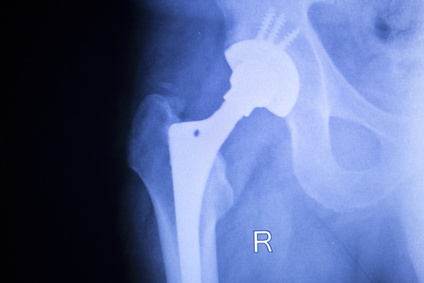Problems with Metal Prostheses of the Hip
For several decades metal prostheses have been used to replace joints, particularly the hip joint. Nevertheless, relatively little is known about the effects these metal implants have on the body and the possible problems with metal prosthesis of the Hip. More recently, increasing concerns have being raised about metal prostheses and their ability to trigger metal sensitivity and metal toxicity within the body.
Several studies have shown that sensitivity associated with metal prostheses is particularly common in women. Research has found the development of soft tissue masses around hip joints containing necrotic tissue12. These pseudotumors affect more women than men and are associated with a high level of iron in the blood.
The exact cause is unknown and may be the result of a range of factors. Researchers believe that these pseudotumors are most likely caused by a toxic reaction or hypersensitivity to excessive metal debris. These metal particulates are released into the blood stream from the mechanical grinding of the prostheses
 A London based study published in 2012 found that rubbing the metal surfaces together leads to the release of metal ions. These metal irons are suspected to be pro-inflammatory and the cause of hip failures within the first five years following hip replacement surgery3. In particular, cobalt and chromium from alloys within the implants appear to play a major role in these processes.
A London based study published in 2012 found that rubbing the metal surfaces together leads to the release of metal ions. These metal irons are suspected to be pro-inflammatory and the cause of hip failures within the first five years following hip replacement surgery3. In particular, cobalt and chromium from alloys within the implants appear to play a major role in these processes.
Most recently, an American research group found a link between metal prostheses and neurological disease. A pilot with a hip replacement had high levels of cobalt and chromium in his blood stream after a receiving a metal prostheses. These excessive metal ion concentrations are believed to have lead to the development of a neurological condition4.
The results of a decade-long American based study into the link between elevated metal ion concentrations and metal prostheses were published in 2013. This research revealed that all study participants exhibited elevated levels of cobalt, chromium and/or titanium5 .
Cobalt concentrations measured three times higher, chromium levels almost four time higher, and titanium concentrations eighteen times higher following hip replacement surgery. The most plausible explanation for these elevated mental concentrations is the mechanical wear and tear of the metal surfaces of the joint.
At this stage, it’s unclear what the effect these concentrations of metal ions will have on the body over time. More research is needed to investigate the release and effect of metal ions from joint prostheses.
Bibliography
- Pandit H, Glyn-Jones S, McLardy-Smith P, <i>et al.</i> 2008. “Pseudotumours associated with metal-on-metal hip resurfacings”. J Bone Joint Surg Br. 90(7): 847–51, ↩
- Boardman DR, Middleton FR, Kavanagh TG. 2006. “A benign psoas mass following metal-on-metal resurfacing of the hip”. J Bone Joint Surg Br. 88(3): 402–4. ↩
- Hart <i>et al</i>. 2012. “Cobalt from metal-on-metal hip replacements may be the clinically relevant active agent responsible for periprosthetic tissue reactions”. Acta Biomater. 8(10): 3865-73. ↩
- Soto JG and Tower SS. 2013. “Systemic disease after hip replacement: Aeromedical implications of arthroprosthetic cobaltism.” Aviat Space Environ Med. 84(3): 242-5. ↩
- Levine <i>et al</i>. 2013. “Ten-year outcome of serum metal ion levels after primary total hip arthroplasty: a concise follow-up of a previous report.” J Bone Joint Surg Am. 95(6): 512-8. ↩






